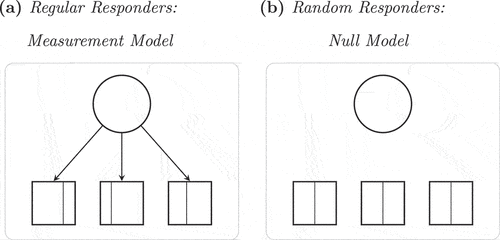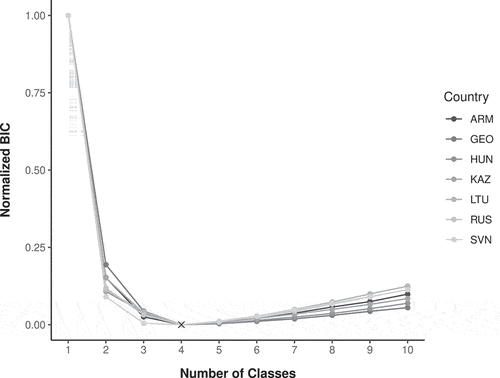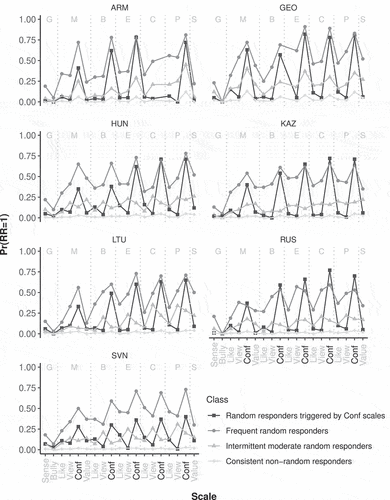Figures & data
Figure 1. Mixture IRT model framework to define and operationalize random responders in terms of independence and uniformity of item responses.

Table 1. Overview of scales in the TIMSS 2015 student questionnaire.
Figure 2. Normalized Bayesian information criteria as a function of the number of latent classes.

Figure 3. Random responder status probability profiles for the four-class solution.

Table 2. Class sizes and class averages of within-person statistics across seven countries.
